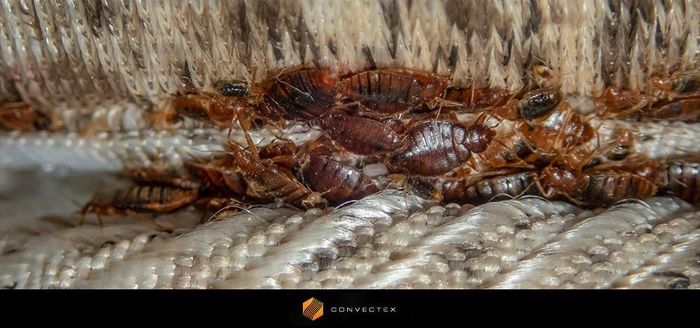LET'S TALK ABOUT BED BUGS
BLOG & NEWS
-

How Bed Bug Heat Treatments Protect Our Environment
Feb 1, 2022Read More »In recent years we’ve all become more aware what chemicals can do to our bodies and our environment. From the ingredients in the paint we use, to our face cream and fragrances and vehicle exhaust, there’s no denying that the world is a safer place than it was 100 years ago.
One area that took a little longer to improve is bed bug pest treatments. For decades we’ve been using chemicals to kill off bed bugs and other unwelcome pests, perhaps knowing but not understanding that they’re not as good for us and our homes and the environment as they could be. A recent survey by the EPA found that 75% of US homes have used a pesticide in their home within the past 12 months – a shocking statistic that puts a lot of people at risk.
-

How Much Bed Bugs Could Cost You & Your Business?
Dec 1, 2021Read More »For decades, bed bugs have caused damage to reputations, lawsuits, and costly failed attempts at DIY and chemical treatments, emptying home and business owners’ pockets around the country.
Each year, more court cases claiming “negligence” against property managers and hotel/motel owners pop up. These claims cost business owners a lot in settlements, damaging their reputation, sometimes beyond repair. As a business owner, you must have a plan for detecting and eliminating bed bugs in place.
-

Bed Bugs in The Office? The Scary Truth
Nov 2, 2021Read More »Don't let the name “bed bugs” fool you – they aren’t exclusively found hiding in beds and mattresses. These little critters feed on human blood, so it makes sense that they go wherever there are humans, including on public transport, in schools, hospitals, and even offices! For this reason, those responsible for communal office spaces need to look out for the signs of bed bugs and how to treat them if they’re discovered.
Let’s look at why bed bugs spread, how buildings become infested, and how to deal with them if you find them.
-

What Do Bugs Eat and Why Are They Bad in Your Home?
Oct 1, 2021Bed bug infestations seem to be more common every day, with reports coming in from all over the US and other areas of the world. To deal with them effectively,, we have to understand them and find out their habits. A major consideration is, what do they eat?Read More » -

Why You Shouldn’t Use Chemical Sprays to Treat Bed Bugs?
Sep 1, 2021Read More »Chemical sprays have been a part of the pest control armory for many years and will probably remain so, but they are often not the best choice. Though insecticides can be effective in killing pests there are disadvantages in their use and alternative methods may offer a better solution to destroying an infestation.
Nowhere is this more clearly seen than in the treatment of bed bugs. Traditionally, chemicals have been used to kill this common parasite but rarely is this the right choice to eradicate this bug.
-

Where did bed bugs come from?
Aug 2, 2021Read More »Where Did Bed Bugs Come From in the First Place? Their History
Not so long ago it seemed that the bed bug had stopped being a problem in the developed world. Back in the 1950s and 60s, the instances of infestations were very few and far between, but that is no longer the case. Stricter control of insecticides and cheap travel have contributed to an upsurge in this irritating critter, so much so, that reports of bed bugs have become commonplace all over the United States.
